The Experience of Rasa
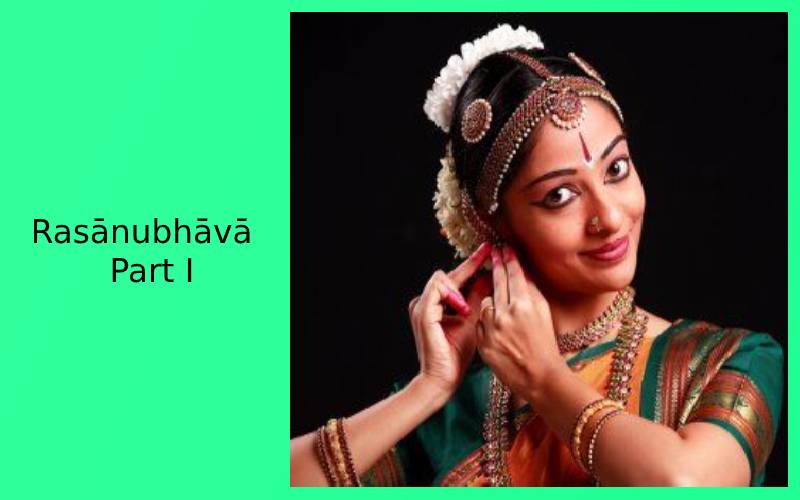
Introduction
Dance, as we know, is a performing art. There are innumerable varieties and genres in dance. One of the age-old dance forms is ‘Bharatanatyam’. It is the unique capacity of Bharatanatyam to evoke the aesthetic experience in both the performer and the viewer which provides a fulfilling experience. With the graceful and aesthetically rich physical movements, the dancer’s mind supports one to bring out the essential emotions in a disciplined manner. Depending on what the dancer tries to convey through her emotion, the Rasānubhāvā also varies. Bharata Muni clearly explains eight different Rasa-s in his book, Natyashastra and Abhivanavagupta adds one more to the eight making it Navarasā.
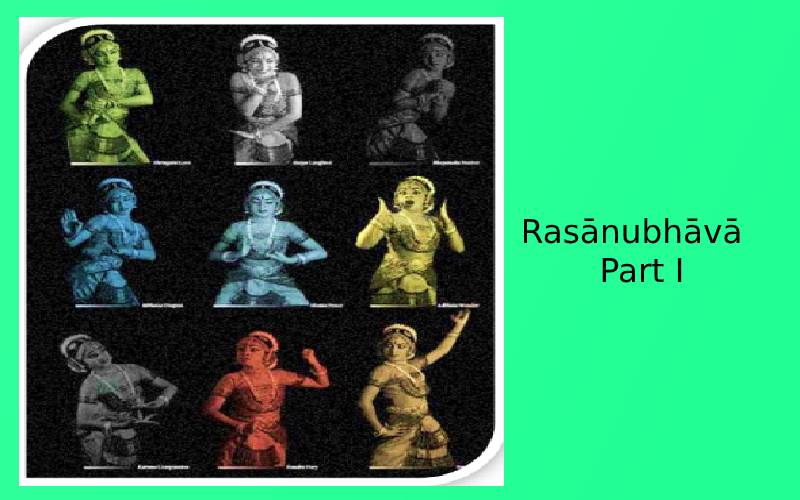
Navarasā means ‘Nine Emotions’ in which ‘Nava’ signifies nine and ‘Rasa’ signifies emotions. The nine emotions included in Navarasā are Śṛṅgārā (love), Hāsya (laughter), Karuṇā (kind-heartedness or compassion), Raudra (anger), Vīra (courage), Bhayānaka (terror), Bībhatsa (disgust), Adbutha (surprise), and Śānta (peace or tranquility). Bhāva is the mode in which the meaning intended is conveyed, through words, physical gestures, and facial expressions. It is the expression of the mental state which is the essential ingredient of Bharatanatyam. These nine emotions are naturally present in everyone, but it is in Bharatanatyam that all these are brought out in an organized manner. The two epics, Ramayana, and Mahabharata depict many instances where the characters display the play of all these emotions.
Types of Bhāva-s
Bhāva is the way in which the nine kinds of emotions are exhibited. It can be expressed using three modes: Vācika (verbal), Angika (postures of hands and legs), and Sāttvika (involuntary state). Before knowing the types, it is essential to know what a Stāyibhāva is. It is a state where the Rasa gets originated through various Bhāva-s. There are four different kinds of Bhāva-s, they are,
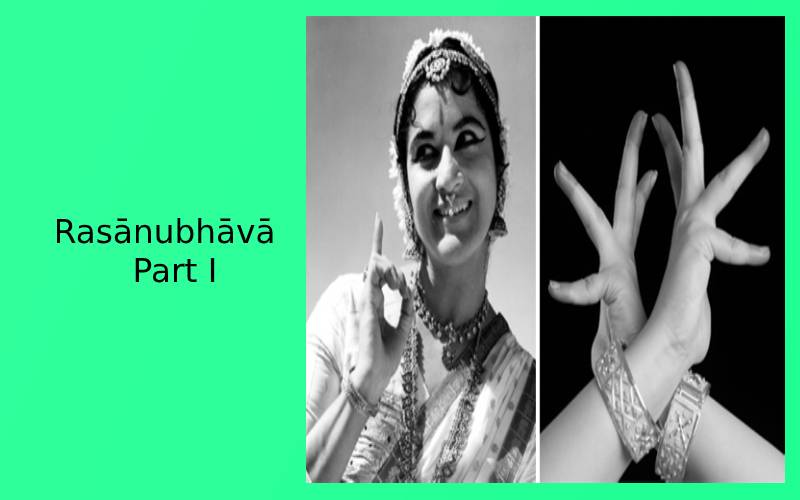
1. Vibhāva:
The term Vibhāva means ‘knowledge’. It is the expression of Bhāva-s by the combination of Vācika, Angika and Sāttvika abhinaya. It is the aspect that evokes Rasa in its complete form. The creation of Rasa in a peculiar way can be termed as Vibhāva. In Vibhāva, the characteristic feature of everyone is determined from the expression of feelings.
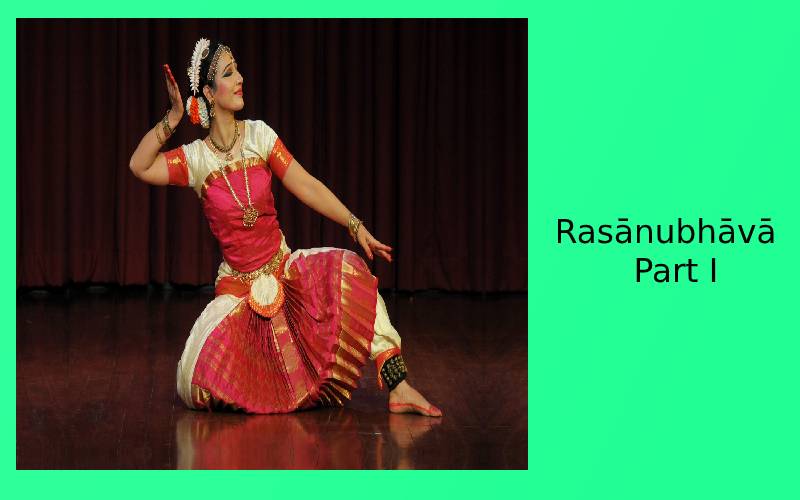
2. Anubhāva:
This is the expression of the emotions or sentiments felt by a person embedded in the mind. This is represented by the movement of the eyebrows and facial expressions. These come as natural emotions.
3. Sāttvika Bhāva:
This Bhāva evokes the sympathy by responding to the sorrow of others. These are the feelings expressed when a person gets worried over the problems of others. For a person who being depressed or troubled, feels happy and relieved when one is consoled by another.
4. Vyābhichari Bhāva:
This is also known as Sancāri Bhāva. The term means improvisation or explanation. These are transitory feelings that differ from person to person. They will not have a constant nature. Sancāri Bhāva-s are of 32 varieties.
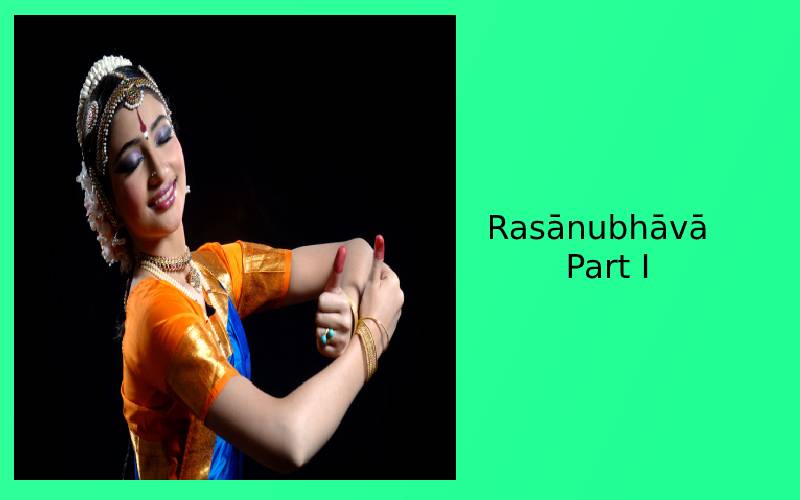
The Navarasa or Nine Rasas are:
1. Śṛṅgārā:
We can find that much of the entertainment and content of the traditional Indian arts revolves around the relationship between a man and a woman. The primary emotion thus generated is Śṛṅgārā. The romantic relationship between a lover and the beloved is a metaphor for the relationship between the individual and the divine i.e., the Nara-Narayan relationship. According to the Natyashastra, Lord Vishnu is the presiding deity of Śṛṅgāra rasa. The colour associated with this rasa is Green.
In classical theatre and classical dance, Śṛṅgāra rasa is referred to as the mother of all rasas. Śṛṅgārā gives scope for a myriad of other emotions including jealousy, fear, anger, compassion, and of course for the expression of physical intimacy. No other rasa has such a vast scope. Bharata Muni said that longing (Abhilāsā) is the but the first stage of love. Other stages vary, depending on the kind of relationship shared between two individuals.
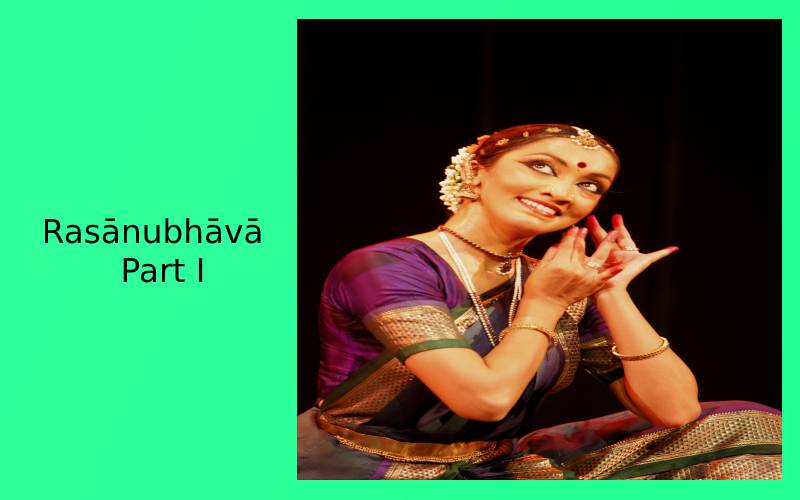
2. Hāsya:
The Hāsya Rasa is born from the Stāyibhāva, Hasa. In the art of acting, Hāsya occupies a variegated position. Its colour is white and is attributed to Pramātha-s, who are said to be the attendants of Lord Shiva. According to Bharata, Hāsya is a rasa caused by the reversal of decoration, changed conduct, speech, dress, changed or odd conduct of the limbs. The term itself means laughter. It helps one to get relief from tension and worries.
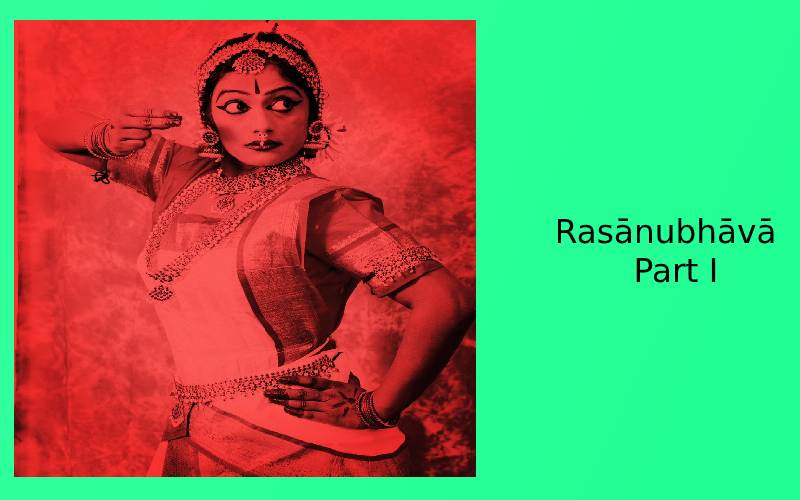
3. Raudra:
Raudra Rasa refers to the ‘furious sentiment’ used in dramatic performance. This is a fundamental and dominant rasa, as described in the Natyashastra. Basically, Raudra Rasa is a disagreeable, destructive rasa, while it has significant use in communication. The energy of anger expresses itself from mild irritation up to real fury. The presiding deity of Raudra Rasa is Rudrā and the colour associated with it is red.
Raudra is most evidently chosen as a characteristic of wicked personalities, like Rākṣasā-s/ill-minded kings, etc. But it does not mean that good characters do not show Raudra. Though their basic nature is calm and collective, they have moments of anger, like when Lord Rama is trying to kill Ravana, Draupadi is humiliated in the hands of Dḥuśāsanā and consequences following these actions.
(To be continued…)
T. R. Surya, Special Correspondent, The Verandah Club
References:
1. http://kolahal.org/2019/11/23/sringara-rasa-in-theatre-the-mother-of-all-the-rasas
2. https://www.speakingtree.in/allslides/nava-rasas
3. https://kalyanikalamandir.com/blogs/bhava/
4. https://lemonwire.com/2017/09/13/raudra-rasa/
NEXT ARTICLE